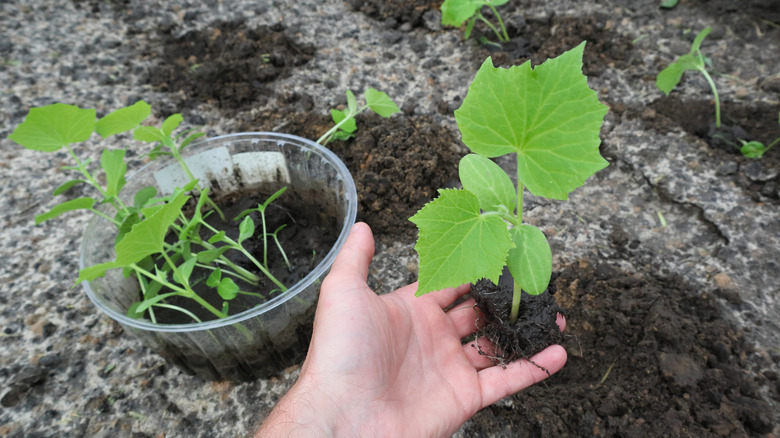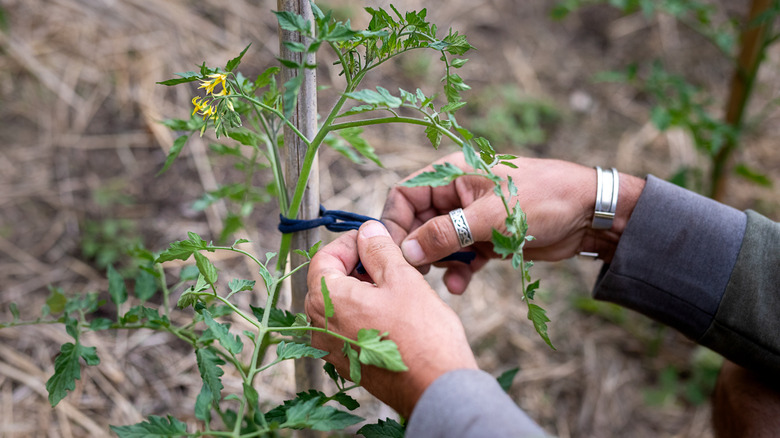The Gentle, Weather-Resistant Zip Tie Alternative To Use On Your Climbing Plants
Climbing or tall, spindly plants like tomatoes, rambling roses, beans, sunflowers, and peppers require more support when growing than other plants. Tying them to a stake or trellis provides them with support as they grow and stops them from flopping over in strong wind and heavy rain. Although many gardeners have zip ties handy when growing creeping plants, it's not actually the best idea. The hard plastic ties can damage soft plant stems. A soft, water-resistant (and therefore weather-resistant) alternative for securing your climbing plants is homemade ties crafted from microfiber cloth.
Gardeners use zip ties for various garden tasks, from holding plants upright to organizing equipment in their potting shed. While these nifty tools can be useful in the garden, their use can have long-term negative consequences for your plants. The often abrasive surface and sharp edges of cable ties can rub or cut into the soft tissue of some plants, damaging stems and branches, creating an entry point for disease, and stressing the plant. Additionally, zip ties secured too tightly to a stake can restrict growth, hindering the plant's normal development and causing girdling. Girdling occurs when a tie cuts through the plant's stem and interferes with its ability to transport water and nutrients.
Microfiber: an alternative to zip ties for securing plants
If you're concerned about damage when using zip ties on climbers, microfiber is a gentler option. It's soft, non-abrasive, weather-resistant, and easy to work with. It's less likely to harm delicate plant stems, and it's budget-friendly. If you already clean your home with microfiber cloths, upcycle the used ones into plant ties. They're ready for reuse when they start fraying, become less absorbent, or you've been using them for about a year. Tightly woven microfiber is a durable material, so your ties should last at least as long as cable ties outdoors — one to three years. A similar, often-mentioned hack straight from your closet might be perfect for garden trellises, but it uses pantyhose. Not everyone likes the look of plants tied with nylons. Plus, few people wear them anymore. Microfiber is a good alternative here, too.
To make your own microfiber plant ties, simply cut the cloth into thin strips. The length, width, and number of strips you make depend on the size of the plant you wish to support — make an educated guess or vary the dimensions so you have lots of options. With your new microfiber ties in hand, wrap one around the plant's stem and the stake or trellis railing. Tie the ends of the tie loosely using an overhand knot for delicate plants and a figure-eight knot for thick stems. You want to hold the plant in place without crushing the stem against the support structure. Pair your new-to-you microfiber plant ties with garden trellis structures that'll upgrade your gardening game, like affordable bamboo pole A-frames or hardy cattle panel arches.

